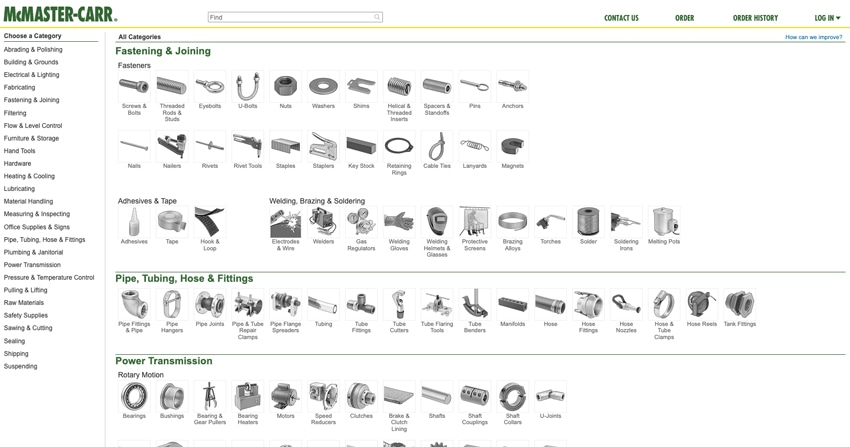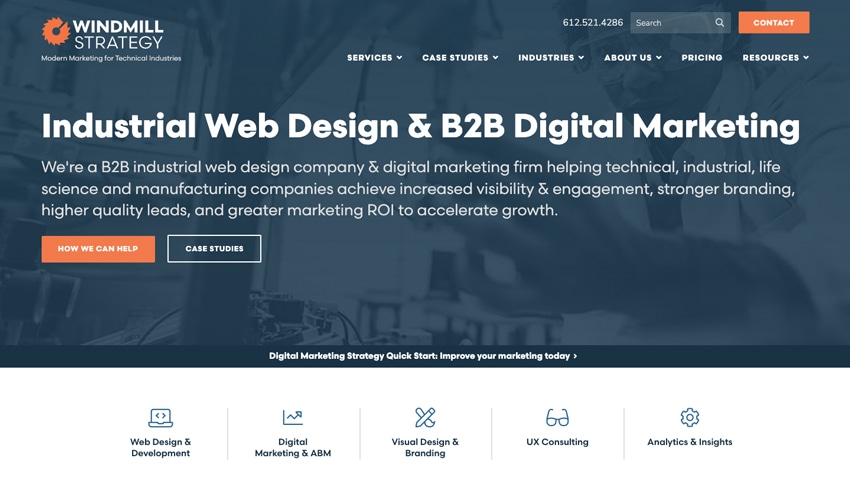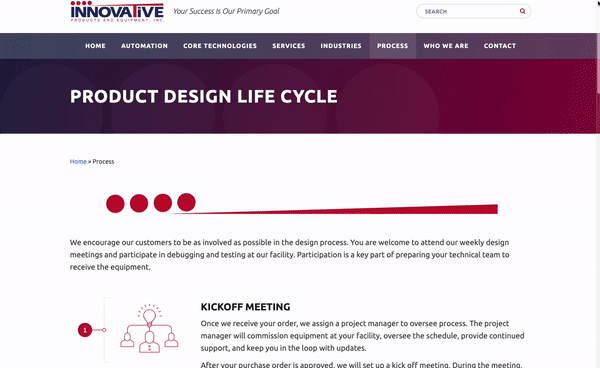How To Improve My Website: Quick Wins To Make Traction in Digital Marketing Despite Recruiting or Capacity Challenges

Does this sound like you?
- You’re too busy with orders (demand far outweighing capacity)
- You don’t have enough employees to meet production needs
- You have supply chain issues
We’ve talked with a lot of businesses sharing these similar and recurring issues, especially driven by the results of the pandemic, namely recruiting and supply chain issues. These organizations aren’t able to look beyond the day-to-day challenges this causes the business.
This all-to-often leads to a lack of focus and innovation on marketing, resulting in a form of “debt” that is ever-accumulating in terms of overall digital marketing, website improvement, and performance that may be the key to future, bigger picture growth after the current crunch is over.
Furthermore, attracting new talent has a lot to do with your website as well. The best prospective employees want to work for a company that they feel good about, and if their first impression of your company (on the website) is muddy, unclear, or of poor quality, they’ll be less likely to be recruited.
This begs the question. “With what little focus I have for marketing, what can I do now to maintain my position in the market or make quick wins?”
Here are some of the quick wins that we constantly advise clients to consider or implement, even if you have limited availability to give much attention to your marketing right now.
Review your homepage metadata optimization
Your homepage is most often where 60%+ of your traffic will enter your website. This is the page that responds to the broadest (yet seemingly narrow) keywords that your best customer will search when looking for a solution or provider like your business.
Of course, you’ll have other pages that are also important to properly optimize, but we recommend starting with your homepage for the biggest bang for the buck, and then as time allows, applying this same set of principles to other pages throughout your site based on traffic and priority to the business.
Far too often, we see homepages that don’t have any optimization completed to align with those keywords that are being searched by your potential customers. Since most websites these days are powered by a CMS (Content Management System), such as WordPress, HubSpot, Squarespace, and many others, you should be able to login to the site and modify/customize the content and metadata very easily, including these key elements of the homepage:
- Title tag
- Meta description
- H1/other headings
- Body copy
Example of a poorly optimized homepage

At its essence, how would you describe your company in 3-5 words? Do those words align with what your client calls your solution? Do those words align with the problem/need the client has when seeking your solution? These are going to be your keywords in most cases, and additional research using a tool like SEMRush can help you research and hone in on a more specific set of words that might better describe your business.
Ex. Let’s use Windmill as an example.

We’re an industrial, manufacturing, and technical website design and development, and digital marketing firm that serves primarily US-based clients in B2B markets.
We need to be more specific in our website optimization than saying we’re a “Website Designer” which is quite broad and may include clients seeking a website for their restaurant (which isn’t a fit for the type of clients we aim to work with — our “positioning”).

Based on some quick research, we have more narrowly defined ourselves as an “Industrial and B2B Web Design and Digital Marketing | Windmill Strategy” which means we have a greater chance of ranking for a less competitive keyword, likely with less overall search volume, but with much greater intent and quality of lead delivered to our pipeline.
We wrote a full article here detailing best practices for how to optimize key pages.
Review your positioning statement in the context of optimization
Related to the opportunity above, you should take the time to clarify your positioning (statement) to clarify what you excel at (not just what you do), why its important, and what value it delivers to the problem/need of the prospect.
We wrote a full article you can find here about writing impactful B2B positioning statements.
Listen to your customers — what questions are they asking?
It seems obvious, but the best strategy for gathering and developing key content for your website is to listen to your customers.
What questions are they constantly asking in the sales process?
What language are they using to define their problem/need?
What are their problems/needs, and how does it map to your offering?
Anyone in digital marketing could sit in on a few key sales calls and just…listen. You would be surprised at what kind of information you can gather from this direct customer conversation (often called “voice of customer” or VOC).
Take notes. Write not only the questions or themes you’re hearing but also the salesperson’s response. This is key: the verbal responses is the outline and basis for content you should be drafting to place on your website. Your website is, in essence, your best salesperson embodied online, and the language and message should be consistent.
Some of the points that your salespeople make might create the outline for a resource post, an additional section on an existing product page, a new FAQs page or section, etc. All of these efforts of putting useful content online can contribute to your overall website improvement.
The purpose of doing this is two-fold because it:
- Increases your ability to rank for more keywords, as presumably, the questions they’re asking in conversation are the same questions they are looking to be answered by searching on Google.
- Sales enablement. As people interact with your website, no matter how they found you, they will be able to digest more information about your company and solution prior to talking to sales, and will likely feel more comfortable subconsciously in filling out a form or making a phone call to start the sales process.
In fact, another result might be the start to a content calendar for future content to produce when you get a chance to breathe past today’s issues.
Add a process page
Coming off the strategy above, this strategy is aimed at giving your client more information on what to expect through the process of working with you — from sales to a final product or deliverable. Use this page to explain the story of how you work with clients, how it benefits them, how it improves upon what your competition offers, etc. This can be a single page with 600-1000 words and may use graphics to visually break up key milestones of your process in working with clients.

In creating this page, you will earn the trust of the technical audience researching companies like yours, and they will be more inclined to reach out to get started with your process.
Make it easy for people to contact you
This one may or may not be easy to implement, but you should verify that your contact form and phone number are clearly listed in the main navigation/header on all pages. Don’t bury your contact information beneath an “About Us” page or somewhere that is less intuitive to take action. Remove that barrier or frustration from the client’s user experience by placing your primary call-to-action (CTA) in the upper right-hand corner of your website, where they will expect to find a button or link to take the next step.
Example Navigation Layouts:



We wrote a full article on the best strategy for your website navigation bar.
Conclusion
Continuous website improvement is absolutely necessary, but It’s easy to get overwhelmed with the thought of taking on more work if you’re swamped helping the business in other ways. We hope you’re able to take on one of the initiatives outlined above, and we’d be happy to have a quick conversation around a smaller entry-level scope that would allow our team to help with any background/research. This would help you strategize or implement any of this work ahead of being able to take on a larger project like a full website redesign or deeper inbound and digital marketing program with our team.


